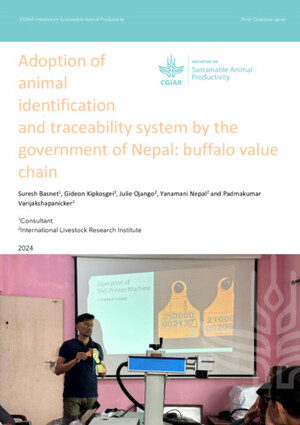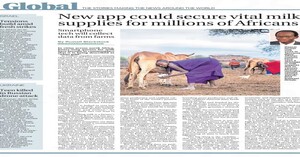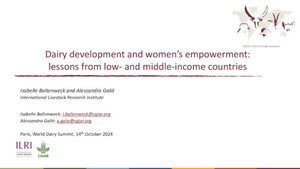
Microbial contamination and hygiene of fresh cow’s milk produced by smallholders in western Zambia
Abstract
A field study was performed to assess safety of smallholder fresh cow’s milk around Mongu, Western Province, Zambia. This involved observation and sampling of milk along the value chain from milking to point-of-sale and storage. Samples were collected from 86 cows, from 9 farmers, selling through two dairy cooperatives, with additional samples from informal markets. Production was very low; around one litre/day/cow and 10 L/day/herd. The milk was typically transported by bicycle in high ambient temperatures without refrigeration until reaching the point-of-sale (journey times of 30–120 min), where it was sold without pasteurisation despite milk-borne zoonoses being endemic (bovine tuberculosis (bTB) and Brucellosis). Although microbiological contamination was initially low, with geometric mean total bacterial count (TBC) of 425 cfu/mL (cfu = colony forming units) upon arrival at point-of-sale, poor hygiene led to high bacterial loads later on (geometric mean TBC > 600,000 cfu/mL after two days refrigeration), with almost all samples culture positive for Staphylococcus aureus and Escherichia coli. After milking, milk was kept for 100–223 min at temperatures favouring microbial growth (median 34 °C) and sold without a microbial kill step. In this situation limited variation in observed standards of milk hygiene had no significant effect on milk end-product bacterial counts. Options for refrigerated transport are limited. Pasteurisation at the cooperative should be investigated, as this would largely remove pathogenic microbes present in the milk whether resulting from cattle infection or poor hygiene during milking and transportation. As milk is also purchased directly from producers, on-farm milk heating options should also be assessed. Smallholders may benefit from access to national markets by providing milk to large dairies, which have systems for ensuring safety. However, this requires significant investment and an increased and more consistent supply of milk; and many consumers, unable to afford milk sold through formal sectors, would not benefit.
Citation
Knight-Jones, T.J.D., Hang’ombe, M.B., Songe, M.M., Sinkala, Y. and Grace, D. 2016. Microbial contamination and hygiene of fresh cow’s milk produced by smallholders in western Zambia. International Journal of Environmental Research and Public Health 13(7): 737.










